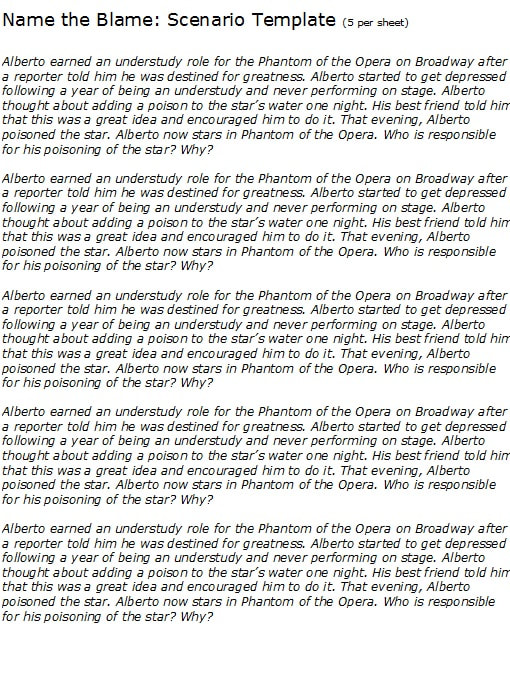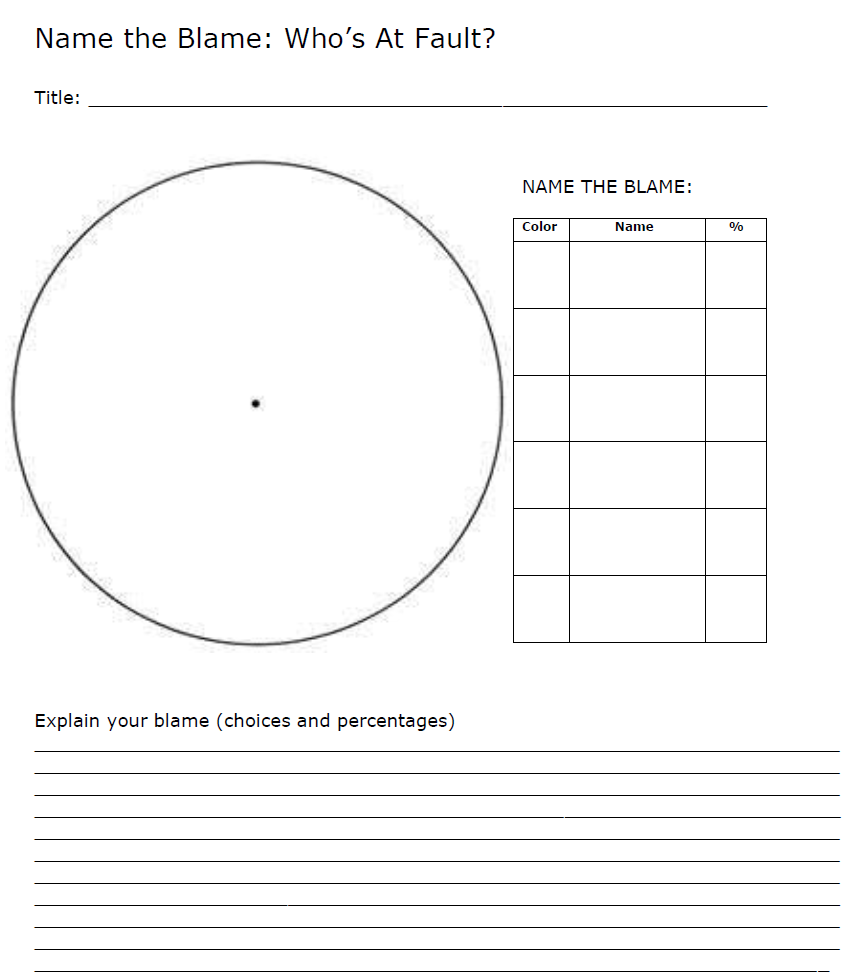59. NAME THE BLAME: WHO’S AT FAULT? (Discussion, Feedback, Writing)
Description: This clever protocol, using a simple pie graph, allows students to think and reflect on assigning blame for a particular situation. Students will justify answers with supporting evidence.
Application: This activity can be used in subjects such as English, science, and social studies at the end of a unit of study.
Process: Introduce the idea of blame and responsibility to students by using an introductory scenario that does not necessarily connect to the literature or historical event (Addendum TT) and discuss. Pair students and hand each team a blank pie chart. Review the situation to be explored with students. Ask them to determine who is responsible for creating the situation and to what extent they are guilty. Direct students to draw the divisions in the circle to create the graph, color in the “pie” sections, and label each of them with characters’ names and percentages of blame. After students finish their charts, allow students to present them. Emphasize major differences and justification for them.
Description: This clever protocol, using a simple pie graph, allows students to think and reflect on assigning blame for a particular situation. Students will justify answers with supporting evidence.
Application: This activity can be used in subjects such as English, science, and social studies at the end of a unit of study.
Process: Introduce the idea of blame and responsibility to students by using an introductory scenario that does not necessarily connect to the literature or historical event (Addendum TT) and discuss. Pair students and hand each team a blank pie chart. Review the situation to be explored with students. Ask them to determine who is responsible for creating the situation and to what extent they are guilty. Direct students to draw the divisions in the circle to create the graph, color in the “pie” sections, and label each of them with characters’ names and percentages of blame. After students finish their charts, allow students to present them. Emphasize major differences and justification for them.
Reference, graphics, and/or for more information:
59. Name the Blame: Who’s at Fault?
Hasapis, K. (2014) Name the Blame: Who’s at Fault? Cross Creek Early College.
59. Name the Blame: Who’s at Fault?
Hasapis, K. (2014) Name the Blame: Who’s at Fault? Cross Creek Early College.


